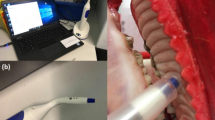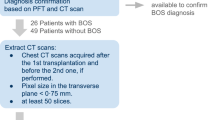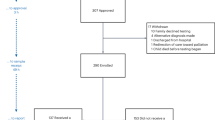Abstract
Bohring–Opitz syndrome (BOS) is a rare congenital disorder of unknown etiology diagnosed on the basis of distinctive clinical features. We suggest diagnostic criteria for this condition, describe ten previously unreported patients, and update the natural history of four previously reported patients. This is the largest series reported to date, providing a unique opportunity to document the key clinical features and course through childhood. Investigations undertaken to try and elucidate the underlying pathogenesis of BOS using array comparative genomic hybridization and tandem mass spectrometry of cholesterol precursors did not show any pathogenic changes responsible.
Similar content being viewed by others
Log in or create a free account to read this content
Gain free access to this article, as well as selected content from this journal and more on nature.com
or
References
Bohring A, Silengo M, Lerone M et al: Severe end of Opitz trigonocephaly (C) syndrome or new syndrome? Am J Med Genet 1999; 85: 438–446.
Oberklaid F, Danks DM : The Opitz trigonocephaly syndrome. Am J Dis Child 1975; 129: 1348–1349.
Addor MC, Stefanutti D, Farron F et al: ‘C’ trigonocephaly syndrome with diaphragmatic hernia. Genet Counsel 1995; 6: 113–120.
Greenhalgh KL, Newbury-Ecob RA, Lunt PW, Dolling CL, Hargreaves H, Smithson SF : Siblings with Bohring–Opitz syndrome. Clin Dysmo 2003; 12: 15–19.
Bisgaard A-M, Kirchoff M, Nielsen JE et al: Transmitted cytogenetic abnormalities in patients with mental retardation: pathogenic or normal variants. Eur J Med Genet 2007; 50: 243–255.
Simpson AR, Gibbon CE, Quinn AG, Turnpenny PD : Infantile high myopia in Bohring–Opitz syndrome. J AAPOS 2007; 11: 524–525.
Kelley R : Diagnosis of Smith–Lemli–Optiz syndrome by gas chromatography/mass spectrometry of 7-dehydrocholesterol in plasma, amniotic fluid and cultured skin fibroblast. Clin Chim Acta 1995; 236: 45–58.
Pierron S, Richelme C, Triolo V et al: Evolution of a patient with Bohring–Opitz syndrome. Am J Med Genet 2009; 149A: 1754–1757.
McGaughran J, Aftimos S, Oei P : Trisomy of 3pter in a patient with apparent C (trigoncephaly) syndrome. Am J Med Genet 2000; 94: 311–315.
Chinen Y, Kaname T, Yanagi K, Saito N, Naritomi K, Ohta T : Opitz trigonocephaly C syndrome in a boy with a de novo balanced reciprocal translocation t(3;18)(q13.13;q12.1). Am J Med Genet 2006; 140A: 1655–1657.
Kaname T, Yanagi K, Chinen Y et al: Mutations in CD96, a member of the immunoglobulin superfamily, cause a form of the C (Opitz trigonocephaly) syndrome. Am J Hum Genet 2007; 81: 835–841.
Acknowledgements
We thank all of the patients and their families and Dr Kaname for analysis of the TACTILE gene in several patients.
Author information
Authors and Affiliations
Corresponding author
Ethics declarations
Competing interests
The authors declare no conflict of interest.
Rights and permissions
About this article
Cite this article
Hastings, R., Cobben, JM., Gillessen-Kaesbach, G. et al. Bohring–Opitz (Oberklaid–Danks) syndrome: clinical study, review of the literature, and discussion of possible pathogenesis. Eur J Hum Genet 19, 513–519 (2011). https://doi.org/10.1038/ejhg.2010.234
Received:
Revised:
Accepted:
Published:
Issue date:
DOI: https://doi.org/10.1038/ejhg.2010.234
Keywords
This article is cited by
-
Bainbridge–Ropers syndrome caused by loss-of-function variants in ASXL3: a recognizable condition
European Journal of Human Genetics (2017)
-
De novoframeshift mutation in ASXL3 in a patient with global developmental delay, microcephaly, and craniofacial anomalies
BMC Medical Genomics (2013)
-
De novo nonsense mutations in ASXL1 cause Bohring-Opitz syndrome
Nature Genetics (2011)



